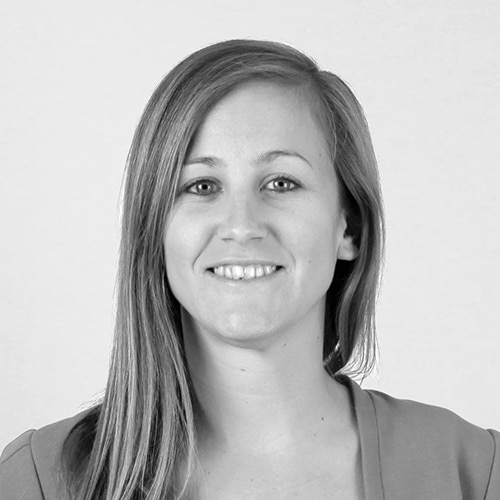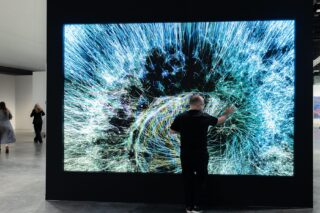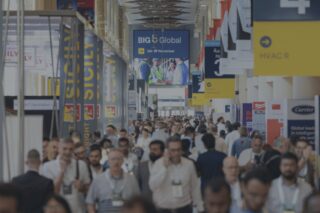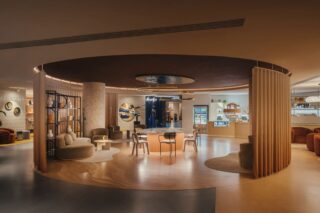When you find yourself desperate to produce the next best chair or the most-talked-about piece of architecture, and you’ve reached the point of complete disconnect with the heart of humanity and its link to nature, go to Iceland.
“This is the only place where I go to reboot,” said Paul Bennett, chief creative officer at award-winning global design firm IDEO, during his talk entitled Feeling Our Future.
The theme of this year’s DesignTalks during Iceland’s three-day DesignMarch event was Survival: save the planet and save ourselves. As agents of change, designers play an important role in determining the path humanity takes into the mysterious void ahead. Yet, the future is less mysterious and void than we may believe.
Rakel Ottarsdottir from Arion Bank began the morning’s talks explaining their digital design creation and stating how important it is for companies to be open to design. Designers are the heart and soul of every aspect of our daily lives, and they have the greatest opportunity to make a difference where needed in order to create a brighter future.
“People are asking for something more than architecture,” Hlin Helga Gudlaugsdottir, design thinking consultant at Capacent and DesignTalks curator, said. “Let’s cut the crap and start asking ourselves, ‘What needs to be changed?’”
The most moving part of the day occurred at the beginning, with Paul Bennett’s talk. Through personal tales, he described design in the visceral sense, as he called it. He spoke of touch, sound and memories. Three heartfelt stories moved the audience to join the event’s live chat with comments of affection and admiration.
Listen to the Soundcloud clip below to learn more about the village Facebook #Kizaz and the rest of his work in Eastern Congo; the funny, yet emotionally touching story behind the waltz; and the beauty of memories and numbers in his project called Re-imagine. Once you’ve finished listening, repeat Bennett’s question over and over again: “How does design walk with us to the end of the world?”
In case you missed it, here’s Paul Bennett’s 2005 TED talk in which he explains “small is the new big.”

You can also catch this interview with Paul Bennett by designboom.
Hope & Possibility in Good Design
Although Bennett’s successful talk full of life, tenderness and hope for a better today and an even better tomorrow was a hard act to follow, architect and co-curator of the SAMARK exhibition Anna María Bogadóttir drove a compelling presentation. She put forward a number of upcoming and potential projects in Iceland, notably Óðinstorg (Óðin’s square) from BASALT Architects, which received first prize in a design competition, and spoke of other recently completed structures.
The center of every project was a common thread: wellbeing. Bogadóttir is a firm believer in the notion that proper design can improve the wellbeing of inhabitants. She noted that the residents of an elderly home project by the office Hornsteinar Architects took 60% less medication than those in other such facilities. The audience wondered how this could be possible.
“Environment creates happiness.”
It is scientifically proven that psychological well-being links entirely to physical well-being.
Blogs, newspapers and magazines focus so much on the pretty picture that they often forget the heart of humanity. People have been forgetting people. There in the reachable distance, however, a flickering light:
“There’s so much hope and opportunity in good design.”
If we put people and their needs at the heart of the project and achieve beautiful design that responds to such individuality, then we can truly make a difference.
BASALT Architects, known for its work on the Blue Lagoon Spa and Hofsós swimming pool in Reykjavik, both nominated for the Mies van der Rohe award in 2000 and 2010, has been a member of the Icelandic Green Building Council and Nordic Built from its launch in 2009.
Iceland’s Rediscovered Material
Ceramic and porcelain are all about transforming earth with fire. The beauty and individuality of each piece depend on nature, explained by Josia Wedgewood in the 1700s. The existing material in various landscapes provides color and texture variations.
The designer, potter and geologist trio behind the project A Search for Icelandic Porcelain, tell the tale of porcelain through time and Iceland’s near participation in benchmarking the material in its earliest days. According to the trio, Marco Polo brought porcelain to the Western world after discovering it in China in 1295. Westerners began calling it “white gold” and it became all the rave. When Marco Polo got wind of a specific type of earth in Iceland that could potentially make beautiful porcelain, he sent an explorer to collect barrels of it. Something happened, though, and the ship carrying the barrels of Icelandic earth got lost and never made it to its destination. It was forgotten about entirely, until now.
During the presentation product designer Brynhildur Pálsdóttir, ceramist Ólöf Erla Bjarnadóttir and geologist Snæbjörn Guðmundsson explained the fun and informative story about the geological processes in Iceland and the three types of porcelain materials tested and approved of: kaolin, granite and silica.
Spaceship Earth and Its Passengers
Before the afternoon talks began, a video played on the large screen in front of the audience. Captain Paul Watson spoke of Earth as a biosphere, calling it Spaceship Earth. He explains in the video that certain species work really hard to keep Spaceship Earth functioning and well, while other species sit around and enjoy the ride.
“Some species are just passengers.” Human beings, for example.
He notes that it’s important for all species to take better care of Spaceship Earth before it’s too late. The passengers need to take care of the important players who are actively working at keeping the ship en route. Humans, he says, are less important than worms because worms tend to the earth. They have a role and perform it as intended, whereas humans no longer seem to have a true place in the cycle of life.
Learn more about “How Much Are We Polluting the Oceans” in an article published in NauticExpo e-Magazine.
In recognition of this global problem, the central subject of the talks, the audience broke into applause before welcoming Alexander Taylor to the stage.
Industrial designer and innovation consultant Alexander Taylor is known internationally for his reuse of plastic waste found in the ocean in Adidas shoes. He spoke about his path as a problem solver, inventing practical innovations, such as cutting leather like it’s wood. The most inspiring story of all must be Operation Icefish, in which he and his team had to design a shoe from plastic waste from the ocean in just six days.
You can listen to his full speech in the Soundcloud below. He ends by telling the audience that we need to begin designing in a different way, “and educate.”
Questioning Human Perception
The day ended with an evocation of virtual reality, an ever-evolving technology that Ersin Han Ersin and his team at Marshmallow Laser Feast use as a tool to communicate ideas. Visual artist and creative director Ersin touched on the link between humans and nature in his talk The World Beyond Our Senses.
The Treehugger project has you put yourself in the shoes of a mosquito, a dragonfly, a frog and an owl. The project aims to generate empathy and thus a desire to reconnect to nature.
“Our relationship with nature is long gone.”
At the end of the day, Hlin Helga Gudlaugsdottir and Paul Bennett, co-moderator of DesignTalks, summed everything up. They concluded that we’re moving away from the battle of humans versus technology. Bennett describes humans as pushing technology and technology as making humans more wondrous.
“There’s a new lexicon that is not setting things up as oppositions all the time, but setting them up as additions,” Bennett said. “Bringing together the best of things: technological wizardry and human wonder.”
“Yes, and we’ve been talking about time and the need for change. I was thinking, ‘Are we in an era where we finally want to take the time?’” Gudlaugsdottir asked.
“I like this notion of slow—that you’re drifting and being pulled towards things,” Bennett said. “I think we’re in this period where people think everything has to be fast all the time. But where’s the time to breathe and reflect? It takes time to do things. Perhaps that’s the thread for the future: the art of time.”
We’d like to end with a special mention of designer and artist Christien Meindertsma whose talk Documentary Design delighted and inspired the audience and recently-graduated designer Michèle Degen whose talk Shame / less stirred reflection on a very taboo topic.


















